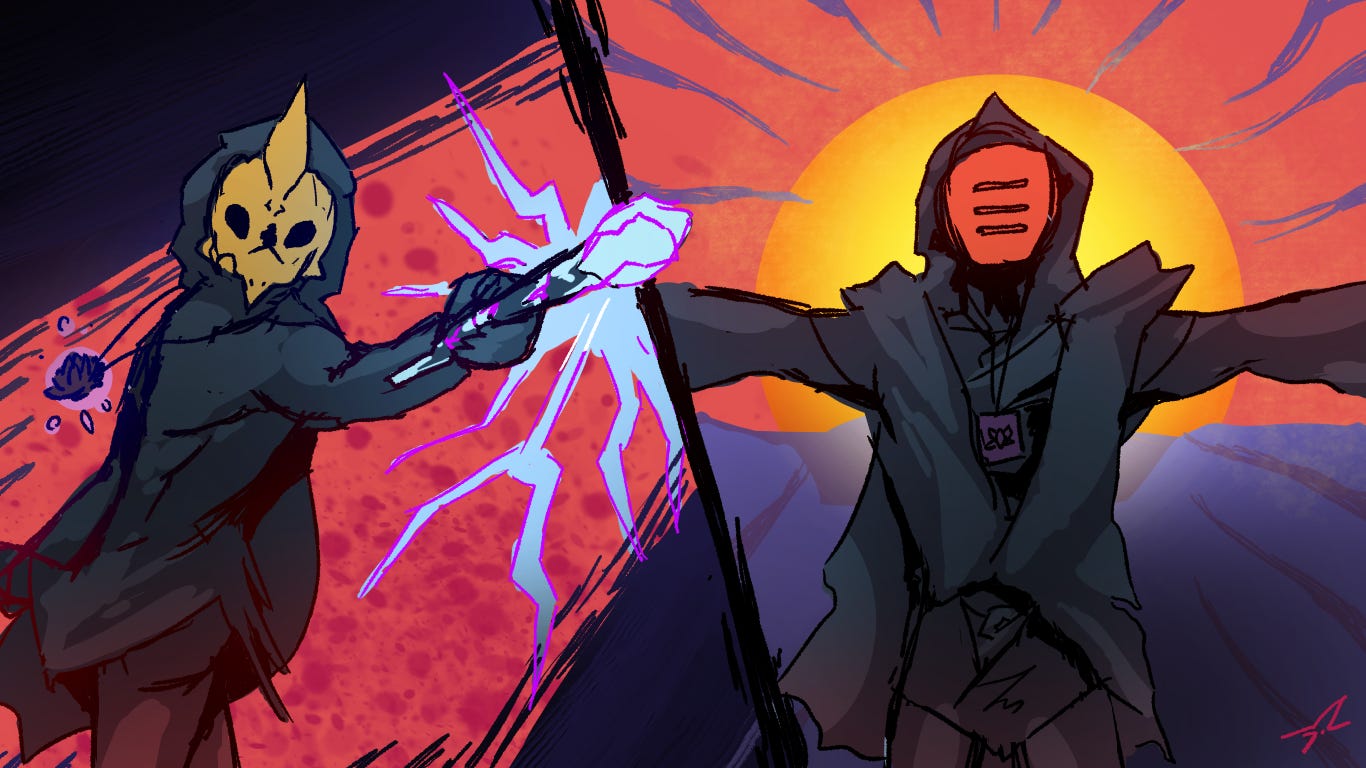👺 How to avoid NOT designing a great villain

“Avoid not making a great villain”?
What a strange title for an article, don’t you agree? “Why the double negative” you might ask. Well, it’s because I believe most GMs try their best to prep the best villains they can possibly create. But that also make the villain inflexible as a character.
If you prep too much, their encounters might feel scripted. If (or “when” in those scripted cases) they survive in this scripted battle, veteran players will notice that they didn’t have any chance in stopping it, so the “consequences” of them “failing” may be just making the plot moving forward, and that’s lame. So prepare for the first hot take.
Make your new villains disposable
Sprinkle multiple villains in your world, maybe one every two sessions, until one of them sticks out, survives the first encounter with the players or at least until the villain get into their nerves. There are some tactics you might apply to increase the probability of success that does not feel forced neither scripted. Choose one or many:
Your villain has an item that aids on their escape: Smoke bomb, hook shot, magical scroll. If so, make sure to narrate a glimpse of the item before they use. If you choose a “teleport scroll” as the item, at least make it so it’s a teleport scroll for a specific place: where the villain hides. If they manage to take the scroll before it is used, and use it themselves, they will arrive at the hiding place, allowing for some interesting exploration and investigation moments.
Your villain has evil servants, that spread the terror. That’s a opportunity to introduce two or three new villains. Don’t think of them as “minor villains”, because maybe the real evil is not on the top of the pyramid, broadening your options.
The villain is an illusion, a weaker avatar of oneself. If so, narrate the absence of a shadow, smell, etc. Make it slightly translucent sometimes, or make it deformed or with a reverberated voice. Their powers must not exceed the real villain’s power, unless they are a trickster, a summoner or something like that.
The villain appears in dreams or visions, talking telepathically if they are capable of doing so. If the villain isn’t aware of the players, make sure to later narrate other villagers talking about that strange dream with the dark knight. Doing this you make sure your players know the world doesn’t revolve around them.
Instant Chekhov’s Gun
Sometimes we forget adding that specific detail to make a villain truly great, and we have to improvise an entire conflict.
The Chekhov's gun is a writing technique that suggests that every element in a story should serve a purpose. If there is a gun introduced in the first act of a story, it should be used by the third act. The principle is named after the Russian playwright Anton Chekhov, who famously said, "If you say in the first chapter that there is a rifle hanging on the wall, in the second or third chapter it absolutely must go off."
What I’m suggesting is: instead of “chapters”, think like minutes or even seconds.
One idea is for you to narrate a strange potion labelled “fog” near a bookshelf between a player and the villain, along with other stuff also. Then, allow the player to make a decision right before the villain. If they don’t use the potion, make the villain use it against them, to flee or change the tides of the conflict.
That’s what I called an “Instant Chekhov’s Gun”. It feels fair because you foreshadowed just before the use and allowed the players to consider using it. The less obvious the better, because it makes the villain look smart.
The Action Economy problem in 5e
I already discussed something related to that in those three articles.
Keep reading with a 7-day free trial
Subscribe to Mage's Hut to keep reading this post and get 7 days of free access to the full post archives.


